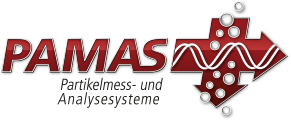With parenteral feeding, the alimentary tract is bypassed, and prepared nutrient solutions are injected directly into the vein. Doctors only prescribe this type of nutrient to seriously ill individuals when there is no other option. In the case of neonates, parenteral feeding is hypercritical but essential for survival.
The pharmaceutical faculty of the Federal University of Rio de Janeiro (Universidade Federal do Rio de Janeiro) investigates in the field of parenteral nutrition. In a study, the research department intended to find out whether added trace elements and vitamins affect the physico-chemical stability of parenteral nutrient preparations for neonates. The key parameter that is equated with the physico-chemical stability, is the size of lipid globules and their percentage content in the nutrient preparation. It is essential to know the size distribution of lipid globules in parenteral neonatal nutrition, as too large a fat globule may favour coalescence and the human body is unable to absorb them parenterally. An instable particle size distribution is potentially dangerous for the patient.
The lipid globules of three different parenteral neonatal nutrient preparations were analysed. All three samples contained the basic ingredients with three differed in compositions. One contained vitamins, one trace elements and the third with both.
Up to now, there has not been any defined specific scientific standard for the analysis of lipid globules in parenteral neonatal nutrition. The research team of the University of Rio de Janeiro therefore referred to the existing pharmacopoeia USP 729 (Globule Size Distribution in Lipid Injectable Emulsions) and USP 788 (Particulate Matter in Injections). Both pharmacopoeias recommend the Light Extinction method for the analysis of injectables.
The laboratory particle counter, the PAMAS SVSS, was used for the Light Extinction method. A PAMAS HCB-LD-50/50 light extinction sensor is integrated into the system. The PAMAS USP software programme transfers the measuring results for data analysis.
According to USP 729, the percentage of fat residing in parenteral neonatal nutrition must not be larger than 0,05%. Or more precisely, the lipid injectable emulsion must not contain more than 0,05% of fat globules larger than 5 µm. Fat globules larger than 5 µm are of interest in pharmaceutical applications, since fat globules of this size can obstruct the lungs, causing pulmonary embolism or can be fatal, if they are ingested parenterally and in too high quantities.
Using the PAMAS SVSS, the scientists of the University of Rio de Janeiro were able to successfully, accurately and reliably find out that the stability of parenteral neonatal nutrition is not affected by additional vitamins and trace elements. Added vitamins and trace elements do not have a noticeable impact on the distribution of fat globules in injectable emulsions.
bibliography:
Bianca Lobo et al.: Influence of the relative composition of trace elements and vitamins in physicochemical stability of total parenteral nutrition formulations for neonatal use. Nutrition Journal, 2012, 11:26.
photo: parenteral neonatal nutrition (Pixabay)




